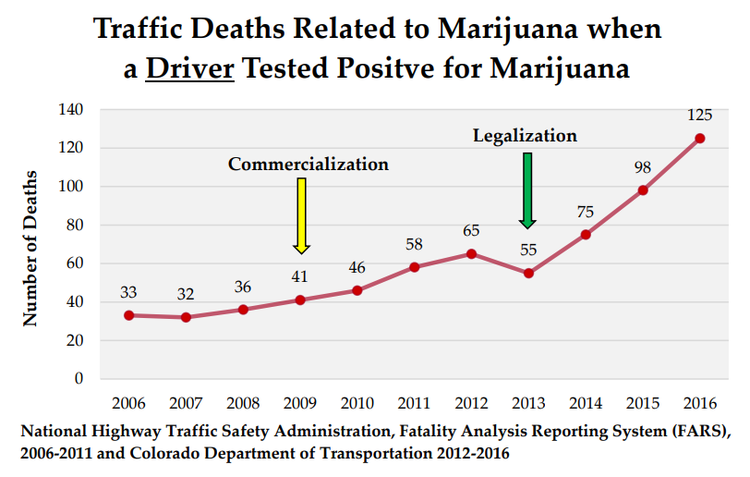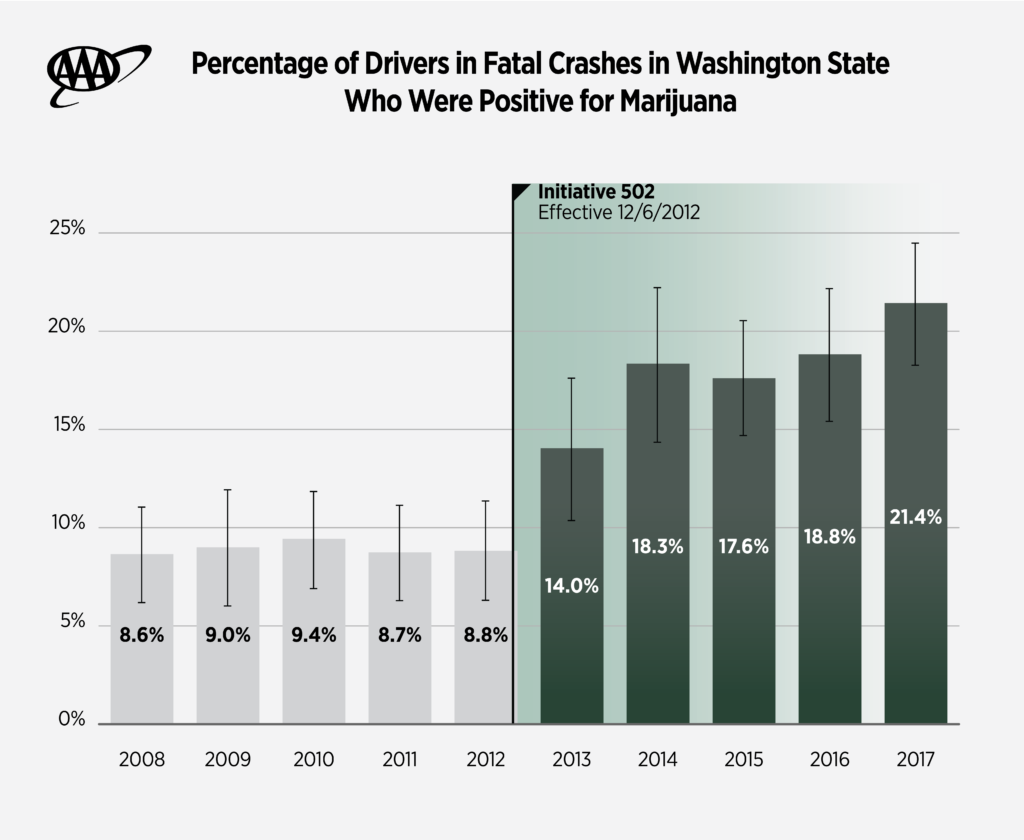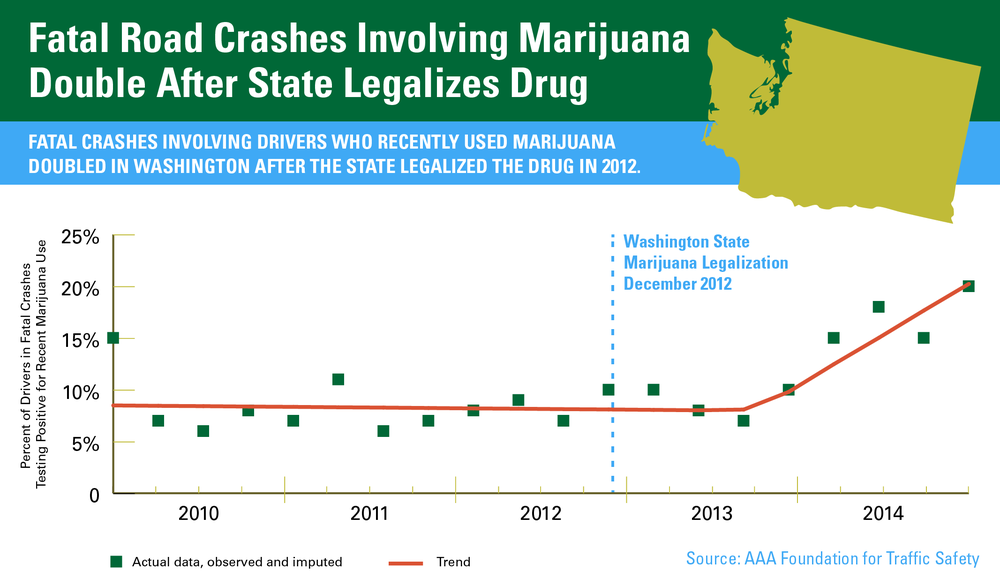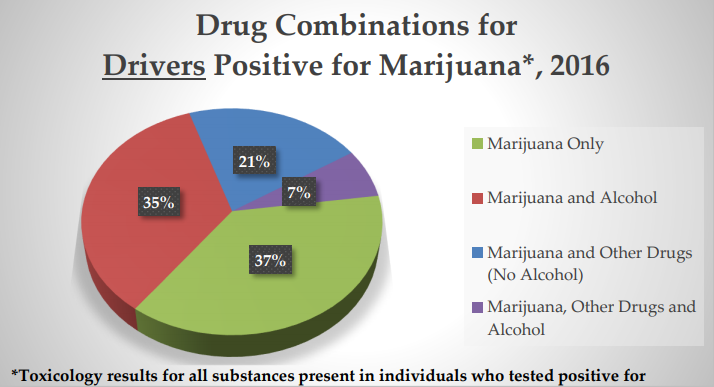The rights of people on the road outweighs the privilege of smoking weed. Ultimately, If a person has THC in their system, they don’t get to drive. We don’t want them on the road endangering other drivers and families. Simple.
 PEDESTRIAN FATALITIES
PEDESTRIAN FATALITIES
While many factors contribute to pedestrian fatalities, it turns out that states that legalized marijuana for medical and/or recreational use saw a 16.4 percent surge in such deaths in the first six months of 2017 compared to the first six months of 2016, while nonlegal states saw a drop of 5.8 percent in pedestrian fatalities over the same time.
Chad Britton (16) was standing next to a parked car when he was hit in 2014. He died from his injuries. The district attorney’s office said the driver, Brandon Cullip, who was 17-years-old at the time, had been smoking marijuana and had been warned by friends in his car that he was too high to drive when he hit Britton.
DEATHS
Since recreational marijuana was legalised in Colorado, marijuana related traffic deaths increased 151%, more than doubling from 55 in 2013 to 138 people killed in 2017. The percent of traffic fatalities that involved drivers intoxicated with marijuana in Colorado rose by 86% between 2013 and 2017, with over one-fifth of all traffic fatalities involving a driver testing positive for marijuana by 2017 (National Highway Traffic Safety Administration, 2006-2011; Colorado Department of Transportation, 2012-2017).
 Source: https://www.stopdruggeddriving.org/problem/
Source: https://www.stopdruggeddriving.org/problem/
According to AAA, Washington State experienced a doubling in drugged-driving fatalities in the years following legalisation. The number of fatally injured drivers positive for marijuana in the state more than doubled following marijuana legalisation, reaching 17% in 2014. The latest AAA Foundation research (2020) found that between 2008 and 2012 – the five-year period before the drug was legal – an estimated 8.8% of Washington drivers involved in fatal crashes were positive for THC. That rate rose to 18% between 2013 and 2017.

In Massachusetts, marijuana is the most common drug found in drivers involved in fatal Massachusetts crashes. Cannabis was found in 175 — 31% — of the 572 drivers involved in fatal crashes from 2013 to 2017, according to the Executive Office of Public Safety and Security. AAA has been warning of the dangers of driving under the influence of cannabis since Massachusetts voters legalized recreational marijuana in 2016.
Source: https://www.stopdruggeddriving.org/problem/
Man who smoked ‘half bowl’ of marijuana daily gets prison for fatal crash
Michigan Live 26 Oct 2018
A man who admitted to smoking “half a bowl” of marijuana daily and causing a fatal crash has been sentenced to prison. Willett caused a rear-end crash that killed 66-year-old Wilma Jean Debruin, the driver of another vehicle. In court the judge asked Willett about his history with marijuana. Willett conceded that he started smoking marijuana when he was 15 or 16, then started using it at least once a month when he was 17. More recently, in the year before the fatal crash, he was smoking “half a bowl” (smoking pipe) each day.
Corinne Gasper’s 22-year-old daughter, Jennifer Hrobuchaka, was killed by a drugged driver in July 2012. “She was driving into work when she was hit by a man high on marijuana, racing through an intersection at 82 miles per hour into her passenger side,” Gasper said.
DRIVING STONED
In Washington State, 18.6% of all DUI cases in the state tested for drugs were positive for THC; from January through April, 2015, 33% were positive for THC.
A recent roadside study of 2,355 drivers in Washington State found that, six months after introducing recreational sales of marijuana, the proportion of daytime drivers testing positive for THC (the hallucinogenic ingredient in marijuana) almost tripled from 8% to 23% (Eichelberger, 2019). According to the biological results of Washington’s Roadside Survey, ”nearly one in five daytime drivers may be under the influence of marijuana, up from less than one in 10 drivers prior to the implementation of marijuana retail sales” (Grondel, 2018).
A report by the state of Colorado found that in 2016, about 72% of some 4,000 drivers charged with driving under the influence tested positive for marijuana. The report, by the Division of Criminal Justice, also revealed that half of the drivers who tested positive were over the legal limit of THC in their blood. 53% admitted they smoked marijuana within two hours of getting behind the wheel. 65% of Coloradan drivers testing positive for marijuana in 2017 combined marijuana with alcohol and/or other illicit drugs (National Highway Traffic Safety Administration, 2006-2011; Colorado Department of Transportation, 2012-2017).
As a result of this increased risk for drivers, the Colorado Department of Transportation has released numerous public service announcements on marijuana-impaired driving:
Ohio had a 6% increase in arrests for drug driving in 2017 compared to the previous year, and a 21% increase in crashes caused by drugged drivers on Ohio highways since 2013. State officials said about one-third of the drugged drivers arrested last year were high on marijuana and the numbers of all drugged drivers continue to climb.
Research by the Highway Loss Data Institute finds that following legalisation of recreational marijuana in Colorado, Oregon and Washington, collision claims in these three states were significantly higher than in comparable, neighboring, non-legal states (Highway Loss Data Institute, 2018).
In Canada, a quarter of Canadians aged 18 to 34 have driven after consuming cannabis or been a passenger in a vehicle driven by someone under the influence of cannabis, in a new survey released in December (2019) by the Canadian Automobile Association (CAA). 86% of young Canadians said it is important to find alternative ways to get home when they drink alcohol, but only 70% of them believe it is important to do so after using cannabis.
NEW ZEALAND
In a study done in New Zealand by six Australian health researchers, it found that habitual users of marijuana have about 10 times the risk of car crash injury or death compared to infrequent or non-users. Those users who crashed had smoked marijuana within three hours of their accidents.
More than half the drivers taken to hospital after causing a crash were found to have drugs in their system, a 2012 study found. The Ministry of Transport study used blood samples taken from 453 drivers who caused crashes. Drugs were detected in the systems of 258 drivers, analysis by the Institute of Environmental Science and Research (ESR) found.
An Automobile Association study found that people on drugs are causing more fatal crashes than those behind the wheel drunk. In 2017, 79 drivers involved in fatal crashes were found to be under the influence of drugs, compared to only 14 in 2013. Seventy drivers were found to be over the alcohol limit or refused to be tested.
Toxicology results received for 10 of the 13 Northland road fatalities in 2019 showed five had methamphetamine or cannabis in their system… When asked about the potential impact of cannabis being decriminalised or legalised after the cannabis referendum, Northland road policing manager Inspector Wayne Ewers said it was assumed the numbers of drug-impaired drivers on the road would increase. “There’s evidence from around the world – just look at the road deaths in Colorado, it’s evidence of what cannabis can do.”
A study in 2017 by the University of Waikato found that nearly half of Kiwi cannabis users don’t think twice about driving after smoking, and that while nearly three-quarters (73.6%) of drinkers had made a decision not to drive after drinking, only 57% of cannabis smokers had made the same call.
“This is a situation where one plus one actually equals a lot more than two. People don’t realise that the combination of alcohol and cannabis… acts as a multiplier. Combining even a small amount of alcohol with drugs is going to potentially mean that you are really, really impaired and shouldn’t be driving. It will mean people are slower to react, are more likely to miss seeing something. If you have the right set of circumstances, those couple of seconds longer… they can make a huge difference in terms of whether you end up in a crash or not.”
AA road safety spokesperson Dylan Thomsen
A man who crashed into and killed a Ngakuru father of four in 2017 admitted smoking a cannabis joint earlier that day. An Oamaru man who caused a five-car smash in 2016 that left five injured and one dead was a learner driver and had smoked cannabis before getting behind the wheel. And in 2017, a learner driver under the influence of cannabis who killed a car enthusiast, father and grandfather asked to be sent to jail. He had smoked cannabis before and while driving his friend from Oamaru to Dunedin.
In Australia, similar campaigns to highlight the problems with driving drugged have been launched.
In New South Wales last year, a stoned P-plater was caught in dash-cam footage driving at 200km/h moments before he ploughed into another car and left an innocent woman to die. Medical assessments found he had undiagnosed schizophrenia and was smoking three ‘cones’, also known as ‘bongs’, every day in the 12-months leading up to the crash.


